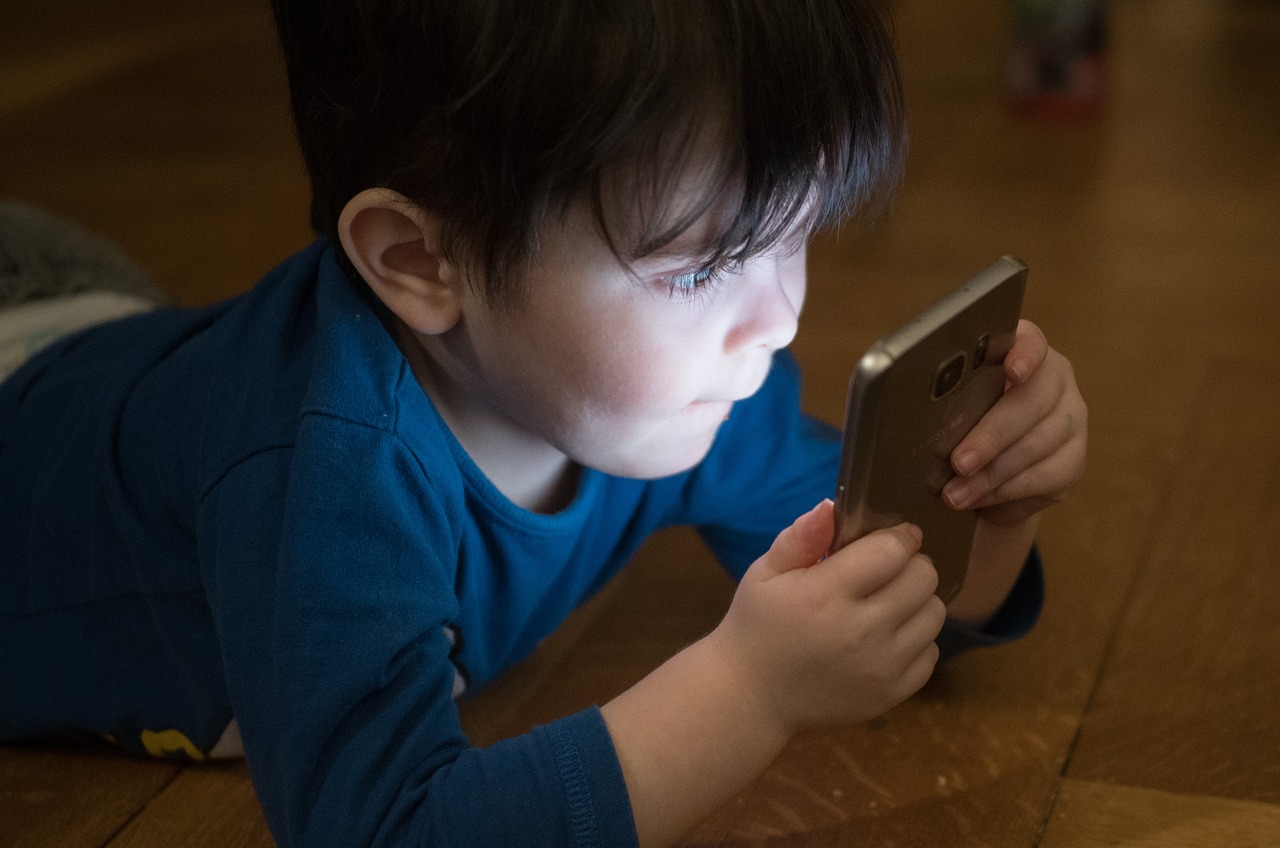It doesn’t get to a closer finish than this. It is the last ball of a deciding match between India and the rival cricket team. You and your friends watching are scared to even shift in your seats. Heartbeats can be heard in the tension-filled atmosphere. You are biting your nails and gulping down saliva nervously, when………
.
.
.
.
.
the maid tugs out the TV plug unknowingly while dusting the shelf.
God save that maid.
It did not actually happen, so you can calm down. 🙂
The emotional rollercoaster that you went through just now is what a child goes through when they are glued to the mobile or iPad watching their favourite video and parents snatch it from them. It is excruciating for them to be disconnected so abruptly. Their ways to cope and show protest become crying, screaming and throwing a tantrum. Not very different from what you would’ve done, eh?
So, don’t snatch that gadget.
There is a proven technique to wean children away from the gadget they are watching at any given moment. But before you use this technique, be prepared with the options you will present to the child to engage themselves in once they put the gadget away. Otherwise, it might feel like being led from a movie hall into a desert. The activity could be a jigsaw puzzle that you can solve together, or to get them to help you in the kitchen, or a play date with another friend.
Once you have some workable options in mind, apply these three steps:

Sit next to the child and watch the video with them for a few seconds. Find something in that video that you can initiate a conversation on to show that you are interested in the video too. For example:
- What are all of them running away from?
- What’s the name of this character? He looks so funny!
- Hey, tell me what is happening in this episode of Doraemon!
Children love it when parents get involved with them. They will immediately start narrating the story or describing the scene.
Listen attentively interjecting with positive exclamations and questions.

Now that you have successfully engaged with them, mention the suggested activity that you came prepared with.
Suggest it in a sellable way. For instance:
- I just spoke to T’s mom to check if she can send T here for sometime to play with you. Would you like that?
- I need some help with mashing the potatoes for dinner. Can you help me out with your little strong hands?

Most often children will immediately drop what they are watching and get ready for the activity you would have discussed with them.
If the video is ending in the next 10min or so and the child wants to finish watching, allow him to do so with a consent to move on to the agreed activity.
When extraction is possible immediately, get them into action mode. Referring to the above instances:
- ……Alright, then what would you like to play with T? Let’s go to your room and keep some toys out
- Let me give you the boiled potatoes and a masher. Come with me to the kitchen.
These three steps: Engage – Distract – Extract work beautifully well because, unlike perception of adults, children don’t really love gadgets. They crave human interaction and if we are able to provide it to them, they would be just fine.
A childhood protected from gadgets
When we see our child addicted to a gadget and watching it for hours every day, it is natural to feel the palpitations and the agitations. However, the addiction did not happen one fine day. Children learn by observing – by observing their family members and their friends. What is right for everyone else to do is right for them to do too.
The damage can be undone, by working on this issue consciously. If you have made up your mind that you would like to minimize the amount of time your child spends on gadgets, here are some rules that can be established:
- Schedule watching days: Say twice a week – Tuesdays and Thursdays for an hour each. Agree on the programs that are allowed.
- Password protect all gadgets: You know when they are watching and can monitor what they are watching
- Emphasize about the joy physical activity and socializing bring: Whenever children have a great time with friends and family, ask them to reflect how joyful and energizing it was versus spending hours in front of a gadget doing nothing
- Set an example: Set aside 30min of agenda-less time with children every day during which gadgets are at bay. Make meal times gadget free – everything counts – TV, mobile, laptop, iPad.
If done with conscious intent, moderating gadget usage is not all that difficult.
To begin at the very beginning, let me remind you of the last ball of the crucial cricket match you almost missed. 🙂


